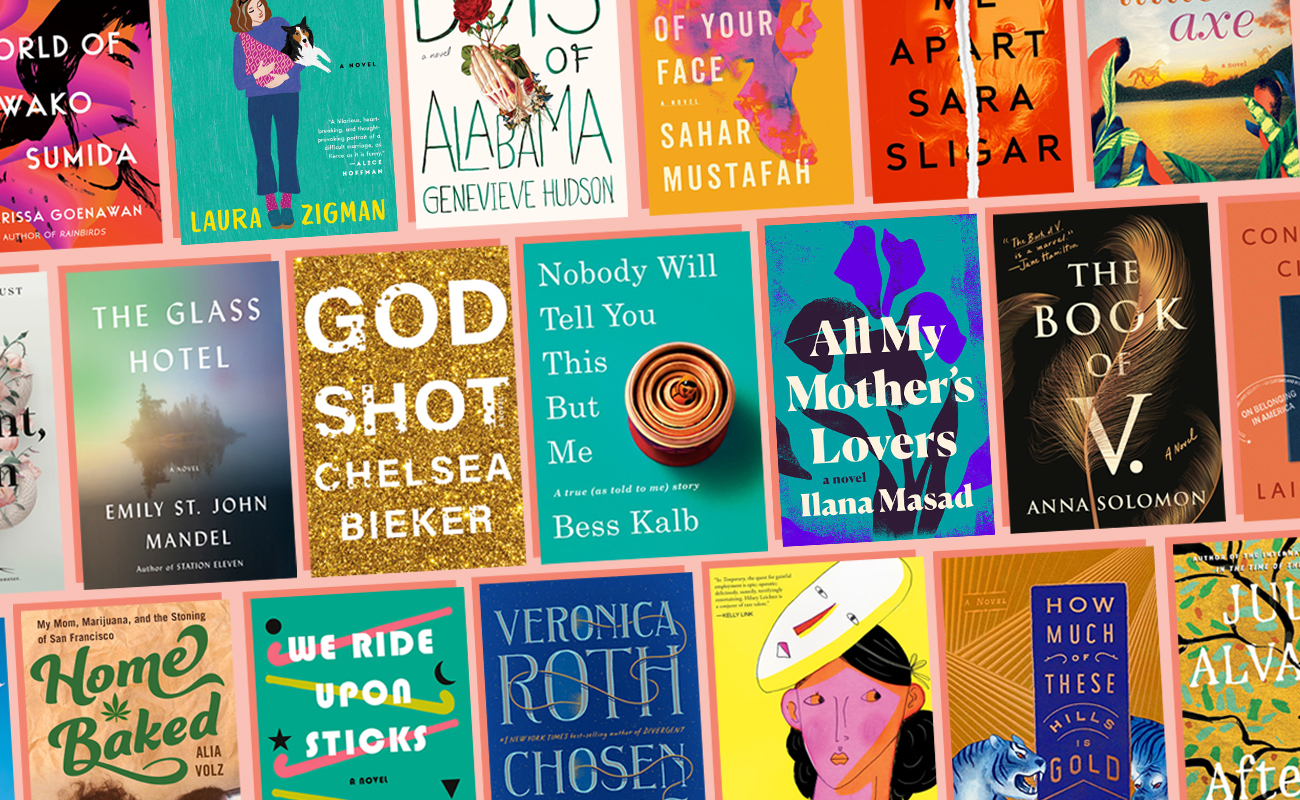Let’s be real. Do you ever read the introductions on book preview posts? Or do you just skip right to the list? I’ll save you the time, and say: Just skip to the list of 23 books coming out this March, April, and May. (If you want to see our previous previews, head to: Winter 2020; Fall 2019; Summer 2019.)
There’s something for everyone, in no particular order…
1. Nobody Will Tell You This But Me by Bess Kalb (March)
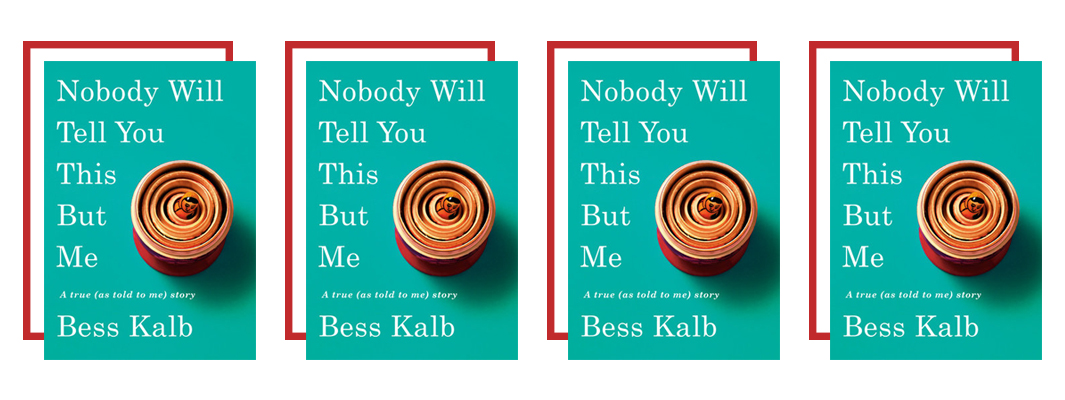
I have never read anything that feels truer to my experience of having a Jewish grandmother than Nobody Will Tell You This But Me. Bess Kalb’s memoir is told from the perspective of her grandmother, Bobby, with whom she had a very close relationship. Bobby passed away at 90, and Bess captures her voice beautifully. The first chapter begins: “My mother taught me exactly one thing and it’s how to make brisket. It doesn’t take a genius.” The book traces Bobby’s life — but also that of her mother, grandmother, and daughter (Bess’s mom). It’s funny and heartwarming and deeply moving.
Read if you’re into: beautiful stories of Jewish families. Especially if you have a Jewish grandma from New York, or you are a Jewish grandma. Get it here.
2. Godshot by Chelsea Bieker (April)

Chelsea Bieker’s debut novel is set in a rural, drought-ridden California town where the community is under the spell of a charismatic cult leader, Vern. Vern has promised to bring back rain if the community performs a series of secret “assignments.” Godshot tells the tale of this community through the eyes of 14-year-old Lacey May, who gets her period for the first time towards the beginning of the story. Lacey May believes in Vern fully — until, one day, her mother leaves with a man she has just met. Bieker expertly tells a story of devotion, resilience, and the violence of men. It’s a hard read at times — the abuse Lacey May suffers, combined her lack of understanding of her own body and what’s happening, makes your heart ache. But that’s the power of Bieker’s writing: She feels so real, you just want to reach through the pages to hold her. A gripping, engaging read.
Read if you’re into: stories that deal with cults, reflections on girlhood and womanhood, messy families. Get it here.
3. Afterlife by Julia Alvarez (April)
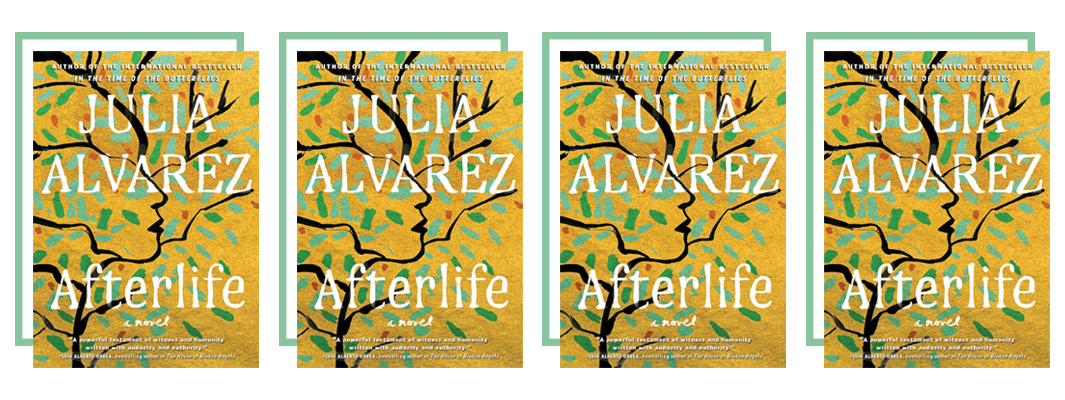
Antonia, an English professor, retires and is waiting at her favorite restaurant to celebrate with her husband, Sam — but he never arrives, because he has suddenly died. Antonia is sent into a life without Sam, one that she’s never imagined. And then, an undocumented pregnant girl, Estela, arrives — the girlfriend of a farmhand of her Vermont neighbor — and her older sister, Izzy, disappears. Antonia and her other two sisters begin a search for her. Antonia must weigh her own needs versus her sisters’ versus Estela’s. She thinks about what her husband, Sam, would do — but she’s not Sam. Put on your own oxygen mask before helping someone else, she reminds herself. Ultimately, she must learn she is not an island — making me think of the question The Good Place often brings up: What do we owe to each other? The book is short but packs a punch; Alvarez, a famous Latina writer, wrote In The Time of Butterflies — this is her first return to adult fiction in many years. You don’t want to miss it.
Read if you’re into: sisterhood stories, politically timely novels that pack a punch. Get it here.
4. The Glass Hotel by Emily St. John Mandel (March)
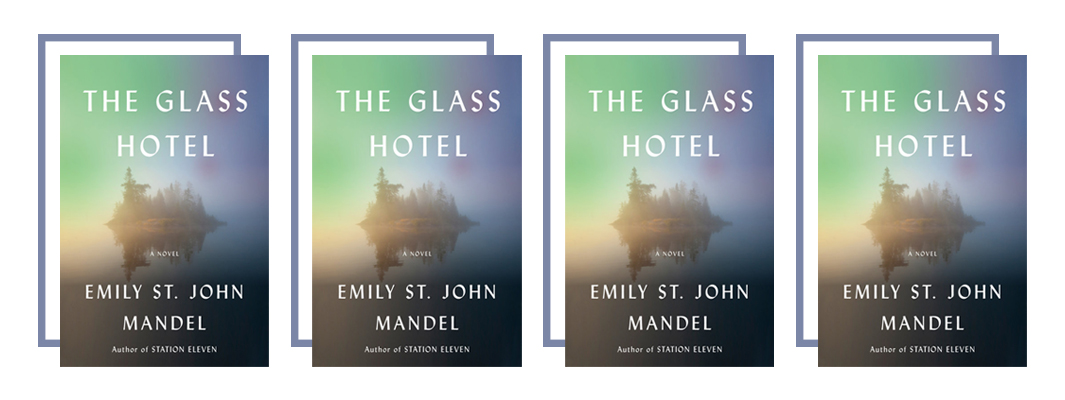
I’m not even sure where to begin in talking about The Glass Hotel; it’s a sprawling novel that tells the story of a ponzi scheme, and those impacted, but also of a sister and brother, and also a luxury glass hotel in the wilderness of Canada. How do all those things fit together?? Magic! Just kidding — Emily St. John Mandel is an expert at weaving together seemingly disparate characters and threads. Loosely based on the Bernie Madoff ponzi scheme, which fell apart in 2008, the story focuses on a woman named Vincent (named for Edna St. Vincent Millay, naturally), whose mother dies when she is 13 years old. Actually — I don’t want to give away much more. It’s best going in knowing next to nothing. I couldn’t put it down.
Read if you’re into: mysteries! And stories with lots of character that you’re not quite sure how they connect but when they connect you’re like omg, YES. Get it here.
5. Chosen Ones by Veronica Roth (April)

Remember the YA trilogy Divergent? Well, author Veronica Roth is back, but this time, with a fantasy novel for adults. The premise of Chosen Ones is super intriguing: What happens after a “chosen one” saves the world and defeats the Dark Lord? What comes next? In Roth’s world, there are five chosen ones: Sloane, Matt, Esther, Albie, and Ines. They were chosen by a prophecy to defeat an evil villain and save the world. They did that, but now it’s 10 years later, and they are all still struggling. Roth centers on Sloane, who struggles with PTSD and night terrors, hates the celebrity spotlight on her and the others, and is still navigating her relationship with Matt.
As soon as the premise is established (five Chosen Ones, all struggling a decade later), about 100 pages in, Roth shifts the entire plot — it becomes something totally unexpected. I am not going to spoil it. Overall, a really compelling premise for an engaging fantasy read.
Read if you’re into: YA magic action/adventure, but grown-up. Get it here.
6. We Ride Upon Sticks by Quan Barry (March)

In 1989, a field hockey team from Danvers, Massachusetts (formerly called Salem Village, where the 1692 witch trials took place) makes a deal with dark forces to win the state championship their senior year. The story goes through their fall semester (the field hockey season) as they try to appease the “dark forces” to keep winning. Barry does not stick to one narrator, or protagonist, instead bringing us through the minds of all 11 players. There are nods and parallels to the Salem Witch trials — the girls themselves are aware of the history of the place — and overall a fun novel about girls becoming women and sports. Quan Barry, who was born in Saigon and raised near Boston, writes in the author’s note that any resemblance to actual events or persons is a total coincidence, but the “1989 Danvers Falcons Women’s Varsity Field Hockey Team was, is, and will always be totally awesome.” While there’s nothing on the internet saying Quan herself was on the team, that note makes me believe that this story is an ode to a very special team.
Read if you’re into: female friendships, team sports, the Salem Witch Trials. Get it here.
7. The Book of V by Anna Solomon (May)

The tales of Vashti and Esther, AKA the stars of the Purim story, is told and re-told in Anna Solomon’s inventive novel, The Book of V. There are three different timelines: Ancient Persia, where we get Esther and Vashti like you’ve never read them before; 1970s New England, where Vivian, a senator’s wife, flees to her friend’s house after a disastrous night; and modern-day Brooklyn, where Lily is navigating being a mom to two young daughters. Solomon, a Jewish author, raises questions of who gets to tell the story; her ending, of how we know the story of Purim today, truly made me gasp. But at the heart of The Book of V. is relationships between women: mothers and daughters, friends, support groups, and women who are waiting to be selected to be a future king’s wife. You know, typical stuff. I love the way the age-old tale reverberated throughout each story, and how Vivian and Lily’s stories eventually intersected.
Read if you’re into: the badass biblical women in the Book of Esther, feminist retellings, female friendships. Get it here.
8. The City We Became by N. K. Jemisin (March)
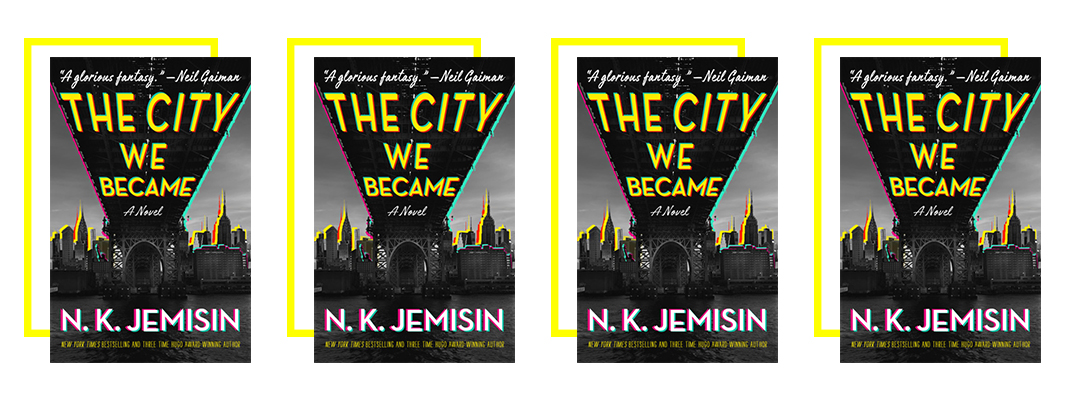
The premise of The City We Became gives us a world in which every city has a soul, a human avatar. A person who not only embodies the city, but is a city. When a city is born, these avatars (which is the wrong word but the only word I can think of) come to life. Most cities just have one; but New York, since it has five boroughs, has five — plus one “primary” who represents all of New York. Jemisin does a masterful job of introducing us to this premise, and then diving into the personas of Manhattan, Brooklyn, Queens, the Bronx, and Staten Island, as they battle for the existence of New York against an evil enemy. There were a few times I had to re-read the passage when I was like okay what just happened, but Jemisin is so good at evoking New York — warts and all — that it feels like these people really do exist. It’s the first in a planned trilogy, and I simply cannot wait for what’s next.
Read if you’re into: science fiction, weird fiction, and, New York, obviously. Get it here.
9. Conditional Citizens by Laila Lalami (April)
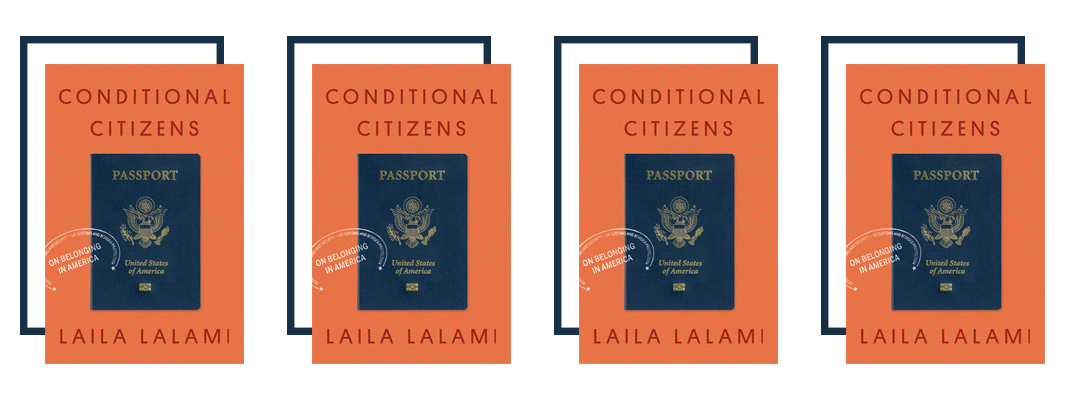
“This is a story about love and country,” Laila Lalami begins, “and I will tell it to you how I remember it, in strands that took me years to untangle and then thread together.” Lalami’s short but powerful book dives into what it means to be American for so many Muslim Americans like her. Lalami, born in Morocco, became an American citizen in 2000 — but her relationship to her country quickly changed after the September 11 attacks. She talks about the idea of “conditional citizens”: people who America embraces, but on their own terms. There were so many passages I bookmarked as I read; she takes you through everything from the U.S.-Mexico border wall to Dr. Christine Blasey Ford’s testimony.
“I wrote this book in a state of rage and love and I can’t wait for you to read it,” she tweeted. TBH, I will read anything Laila Lalami writes, and this did not disappoint.
Read if you’re into: powerful nonfiction, mediations on immigrant identity, a look into our current political climate. Get it here.
10. Temporary by Hilary Leichter (March)
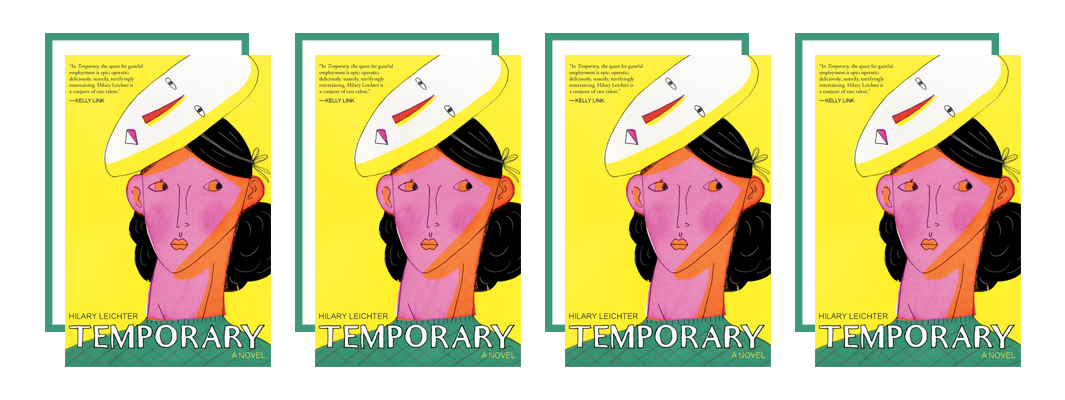
This is possibly the weirdest novel on this list — and I mean that in the best way possible. The protagonist of Temporary is nameless, and she is going from one temporary job to another. She’s a temp, filling in for mundane jobs, but the power of Leichter’s novel is that the jobs get increasingly strange: She’s filling in for chairman of a board, then on a pirate ship, then an assassin’s assistant, and so on. Kirkus writes it’s a “whimsically surreal fable of late-stage capitalism,” and I am inclined to agree; Leichter is satirizing how much of our identities are wrapped in our work, and the failures of the gig economy. It’s absurd, funny, and hits just a bit too close to home, like all the best satires do.
Read if you’re into: late-stage capitalism memes, satire, weird novels (in a good way). Get it here.
11. How Much of These Hills Is Gold by C Pam Zhang (April)

C Pam Zhang’s debut novel begins in the American West, sometime in the second half of the 1800s during “the twilight of the American gold rush.” Lucy, 12, and Sam, 11, are orphaned after their father, a prospector, dies, and they want to bury him according to proper Chinese burial traditions. But — they don’t have two silver dollars to cover his eyes. Things go down, and Lucy and Sam flee into the hills with their father’s body. Zhang writes Lucy and Sam with such tenderness that the siblings feel so real. While the story starts with this tragedy — their Ba’s death — it does not stay focused on that alone. The story expands to their family’s history in America, and what it means to be an immigrant who is not allowed to make a home in the land of immigrants.
You can read the short story the novel was based on here.
Read if you’re into: historical fiction, novels that explore immigration and race, stories about siblings. Get it here.
12. All My Mother’s Lovers by Ilana Masad (May)
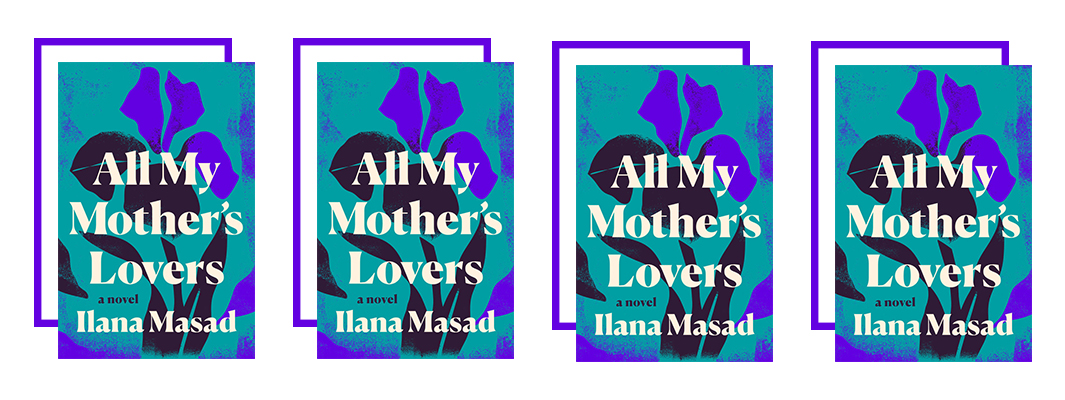
Israeli-American writer Ilana Masad’s debut novel is a tender portrait of a fraught relationship between a mother and her lesbian daughter. At the start of All My Mother’s Lovers, Maggie is in bed with her girlfriend-who-is-not-quite-her-girlfriend-yet when she gets a call from her brother telling her their mom has died in a car crash. Maggie, 27, is numb, and immediately springs into action — buying her flights, figuring out the service at synagogue and shiva, and so on. When she gets to her parents’ house, her brother is acting out and her father is not functioning. Maggie finds letters that her mother left with her will, addressed to different men. After the funeral, she decides, she will set out and deliver them to their intended recipients.
I won’t tell you too much more about the plot, but Masad deftly navigates a bevy of difficult topics, and the result is a beautiful novel on grief, Jewish families, motherhood, queer identities, and more.
Read if you’re into: stories about the aftermath of tragedy, complex families, LGBTQIA stories. Get it here.
13. Girl, Serpent, Thorn by Melissa Bashardoust (May)
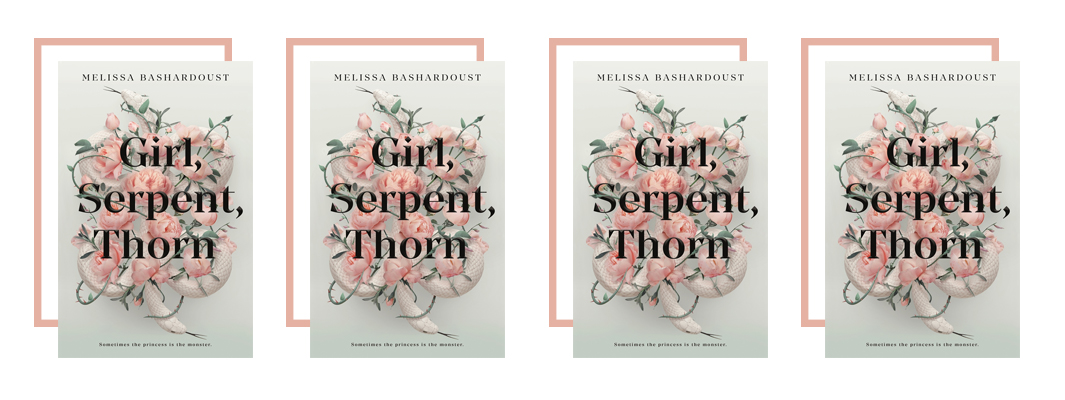
I have to admit something: I am a sucker for retellings of fairy tales and myth. I will read them allll. That’s why I was immediately drawn to Girl, Serpent, Thorn, which promised to be a “captivating and utterly original fairy tale,” drawing upon Persian mythology. In this YA novel, Melissa Bashardoust tells the story of Soraya, the daughter of a shah. From birth, Soraya was cursed: Anyone she touches will die, immediately. So, her family has secluded her from the rest of the palace. As her twin brother’s wedding approaches, a div — a demon — is captured and locked up in the palace’s dungeon. Soraya seeks the div out to see if they know how to undo the curse. And so the story begins… It absolutely lives up to its promise: It’s a captivating, and utterly original, fairy tale about a girl finding her own power. You can read the first chapter here.
Read if you’re into: Isn’t this obvious?! Fairy tales! Get it here.
14. Separation Anxiety by Laura Zigman (March)
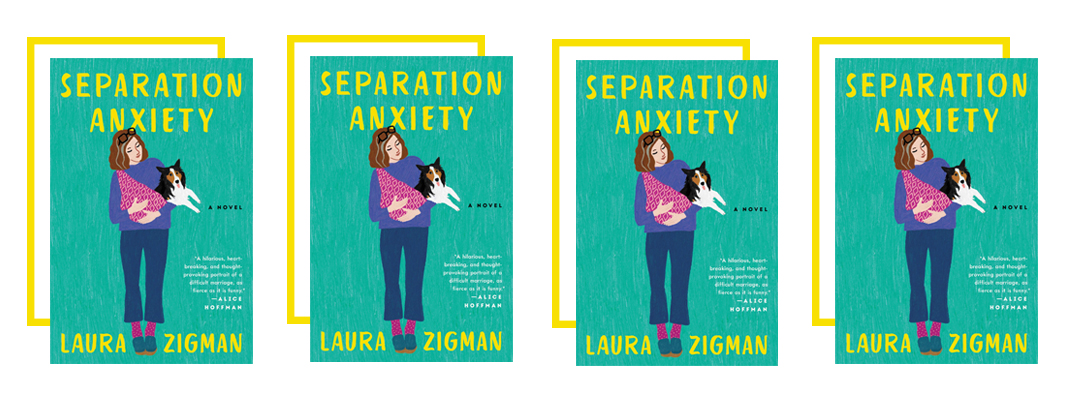
“I started wearing the family dog, a mini-sheltie, a little Lassie, in an unbleached cotton baby sling across the front of my body like a messenger bag, a few weeks shy of fall.” What an opening sentence! Laura Zigman’s fifth novel, Separation Anxiety, is the story of Judy, a woman who, yes, begins wearing her dog in a baby sling. Zigman instantly captured my heart on page 4, when Judy remembers the brown corduroy suit she wore to her bat mitzvah. But the story is not about a woman who begins wearing her dog in a baby sling; it’s a story of figuring oneself out in middle age, navigating friendships and marriage and motherhood. It’s funny and tender and worth your time.
Read if you’re into: stories about difficult marriages, stories that will make you smile, and a story about a woman wearing her dog in a baby sling. Because, honestly, what a great premise. Get it here.
15. Anna K by Jenny Lee (March)

Have you ever wondered what Anna Karenina, Leo Tolstoy’s 1878 novel, would be like if it was set in New York City’s teen elite? No?! Well, luckily, Jenny Lee has, and Anna K is an absolute delight. It imagines Anna Karenina as Anna K., a Korean-American socialite, a 17-year-old “It Girl” in Manhattan and Greenwich society. The best re-imagined character is that of Konstantin “Kostya” Dmitrievich Lëvin — who in the OG Anna Karenina is a 32-year-old landowner who is in love with Kitty, and is old friends with Prince Stiva. In Anna K., he’s a 17-year-old Black Jewish senior, Dustin, who has been accepted to MIT and is tutoring Steven (Anna’s brother), and is in love with Kimmie, Steven’s girlfriend’s younger sister. We can’t wait for the TV adaptation, which is already in the works at HBO. The tone is Gossip Girl meets Crazy Rich Asians meets (duh) Anna Karenina.
Read if you’re into: well, Gossip Girl, Crazy Rich Asians, and Anna Karenina. Get it here.
16. Boys of Alabama by Genevieve Hudson (May)

Boys of Alabama begins when Max’s family moves from Germany to rural Alabama. Max, who is quiet and sensitive, soon joins the football team. He remains an outsider, however, never really falling in with the toxic masculinity of those around him. When he meets Pan — a goth, witchy, make-up wearing boy — everything changes. Max soon opens up to Pan about his strange powers (I won’t spoil for you!), and they begin to fall for each other. But Max is still drawn to the football boys, the stereotypical boys of Alabama (God, guns, beer, conservative, etc.). This is Genevieve Hudson’s debut novel, and it’s like nothing I’ve ever read before (in the best way possible!!). It felt both intimately of our time and outside it — a story that is so tied to the land, and culture, but at its heart, the story of one boy trying to figure himself out.
Read if you’re into: a genre I didn’t know I needed until now, queer southern gothic with a dash of magical realism. Get it here.
17. The Beauty of Your Face by Sahar Mustafah (April)
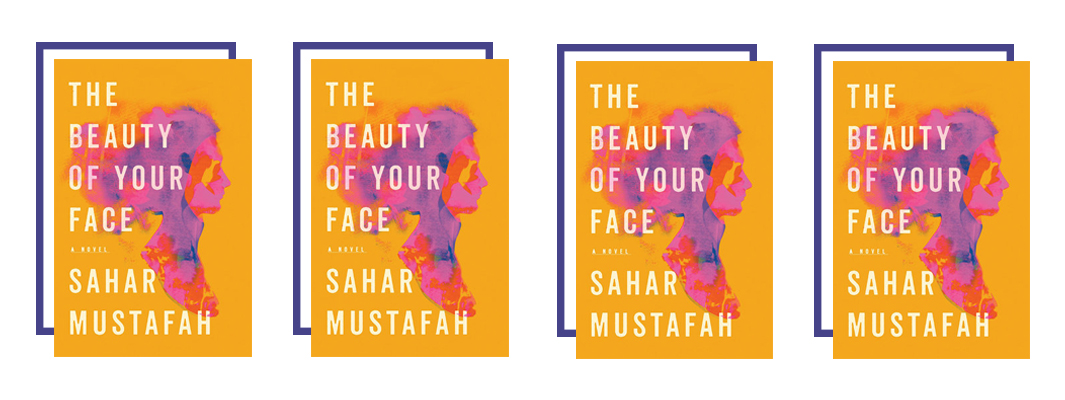
Sahar Mustafah’s novel, The Beauty of Your Face, opens with a school shooting at a Muslim girls school in Chicago. It focuses in on Afaf, the Palestinian American principal, and quickly flashes back to Afaf’s childhood growing up as a Muslim girl in America. The plot mainly sticks with Afaf’s childhood and figuring out her Muslim identity. (The times it flashes to the school shooter, from his perspective, were my least favorite parts of the book, to be honest.) What frightened me — and what Mustafah did so well — was that, while this school shooting at the Nurrideen School for Girls is fictional, it felt so real. A moving portrait of Palestinian and Muslim Americans.
Read if you’re into: family stories, novels that get at our current political moment. Get it here.
18. Book of the Little Axe by Lauren Francis-Sharma (May)
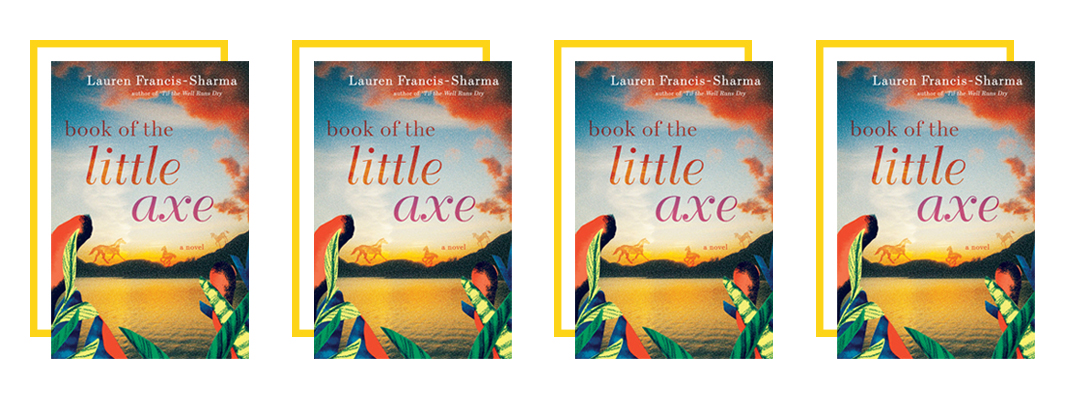
Epic historical fiction: sign me up. The Book of the Little Axe is set in the late 1700s and early 1800s, and mainly focuses on Rosa and her son Victor. When we meet them, Victor and Rosa are living with the Apsáalooke (Crow Nation) in Montana, and Victor is trying desperately to seek his vision and become a man. Rose’s husband, Edward Rose, is actually a real person — he was an African American living with the Apsáalooke, and became known as “Cut Nose,” a respected war chief. Rosa is from Trinidad, the daughter of a free Black man, and much of the book follows her story as Trinidad gets taken over by the British. What I loved about Book of the Little Axe is how expertly Francis-Sharma wove histories of Trinidad, the American West, American Indigenous peoples, and enslaved peoples in the Americas. Worlds that we were taught in school as separate really have overlapping stories and histories.
Read if you’re into: historical fiction and untold histories. This is so up your alley. Get it here.
19. My Dark Vanessa by Kate Elizabeth Russell (March)

My Dark Vanessa is the story of a teenage girl and her English teacher. As a 15-year-old in 2000, Vanessa has an affair with Jacob Strane, her teacher. Years later, in 2017, amid the flood of #MeToo stories, a former student of Jacob reaches out to Vanessa about the sexual assault the student faced — and Vanessa must decide whether or not to come forward with her own story. Kate Elizabeth Russell masterfully handles this very fraught subject and how memory and trauma function. Was what Vanessa experienced “love,” as she has told herself? Or was it abuse? A tough, but fascinating, read.
Read if you’re into: books that grapple with tough questions, #MeToo stories (weird to say if you’re into #MeToo stories, but you know what I’m saying). Get it here.
20. Take Me Apart by Sara Sligar (April)
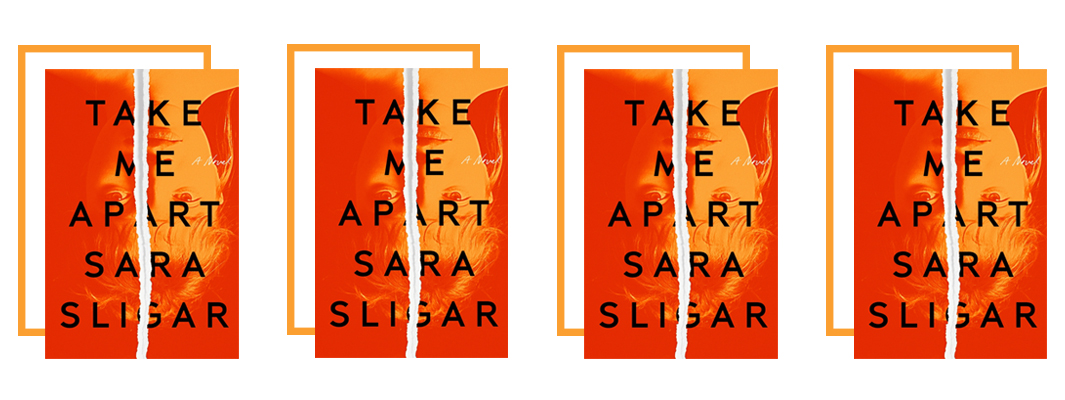
Sara Sligar’s Take Me Apart tells the story of Miranda Brand, a famous photographer, who died at the height of her career. Her death was ruled a suicide, but not all the details added up. Decades later, Miranda’s son, Theo, hires ex-journalist Kate to sort through Miranda’s papers and create a finding aid so he can sell them to a library. Kate — who has secrets of her own — gets sucked into Miranda’s life, by reading her letters and diary, and starts to suspect what happened isn’t clear. Sligar masterfully alternates between Kate’s perspective and her complex relationship with Theo, and the documents Kate is finding in the disorganized piles. Without spoiling too much (it does read a bit thriller-ish), Take Me Apart is an incisive look at women in art, domestic violence, and the complexities of legacy.
Read if you’re into: books that you want to keep reading to find out the truth, art, mysteries. Get it here.
21. The Perfect World of Miwako Sumida by Clarissa Goenawan (March)
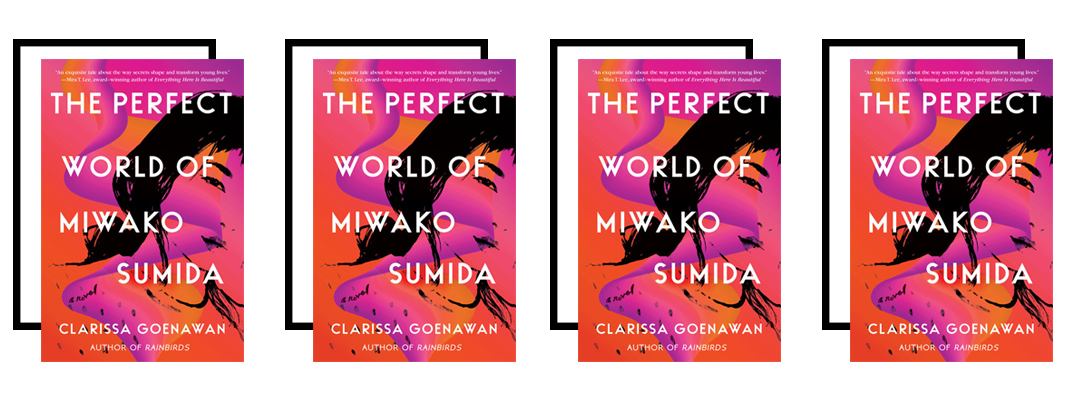
On the first page of The Perfect World of Miwako Sumida, we find out that the titular character — Miwako Sumida — has died by suicide. Divided into three parts, the novel, set in Japan, tells the story of Miwako through Ryusei, a fellow student who was in love with her; Chie, Miwako’s best friend; and Fumi, Ryusei’s older sister. While Miwako narrates, Clarissa Goenawan does an expert job of getting to the core of this university student with a mysterious past, and on how people grapple with the death by suicide of a loved one. Things I loved about The Perfect World of Miwako Sumida: the mystery, the touch of magical realism, the effortless inclusion of different gender identities, and a love of bookstores.
Read if you’re into: tragic stories. Stories that get at how we cope with tragedy and the loss of a loved one. Get it here.
22. Home Baked: My Mom, Marijuana, and the Stoning of San Francisco by Alia Volz (April) (I mean, we have to share the specific release date: 4/20, natch.)
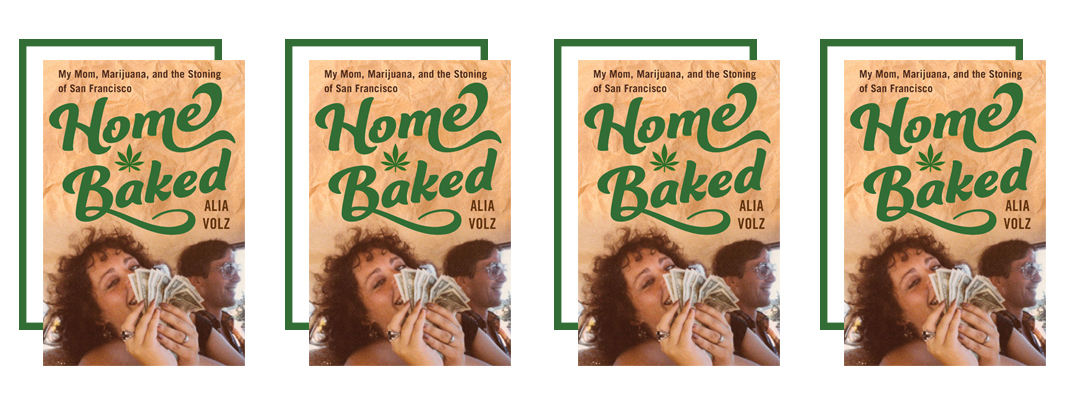
The prologue of Home Baked starts with Alia Volz writing about her elementary school participating in D.A.R.E., an anti-drug program started by Nancy Reagan. But, Volz writes, “We were the people the cop warned my class about.” So sets the stage for her memoir, which tells about how her mom operated Sticky Fingers Brownies — a marijuana edibles business — out of their San Francisco home. As Kirkus writes, “Sticky Fingers may have started off as a goofy piece of psychedelia wrapped up in tight, little squares, but the business soon became indispensable in providing necessary relief for stricken young men who were inexplicably wasting away from a little-understood disease while still only in their 20s and 30s. The author’s firsthand depiction of AIDS and its devastating initial impact on San Francisco’s residents rings with epic tragedy.”
Read if you’re into: Jewish moms! Weed! San Francisco! Memoirs! Home Baked has it all. Get it here.
23. The Autobiography of Alice B. Toklas by Gertrude Stein, illustrated by Maira Kalman
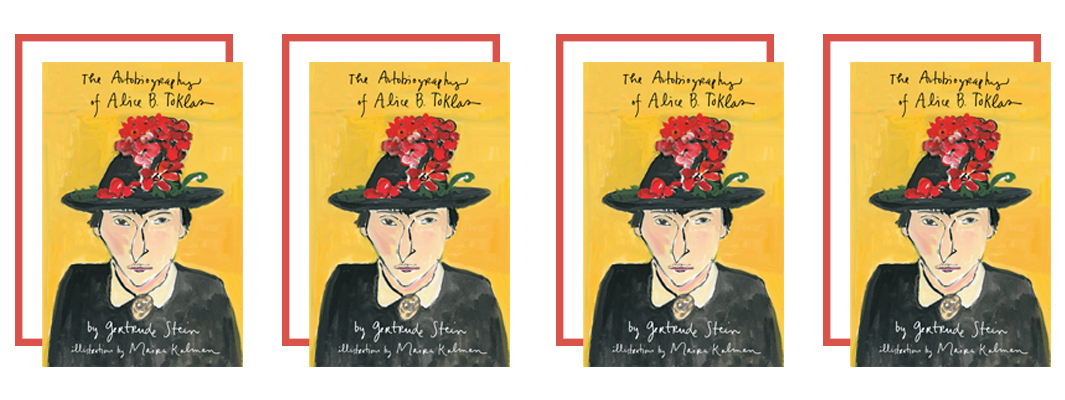
Last but surely not least… this is not a new book, but rather, a new interpretation of a classic. Gertrude Stein — Jewish writer, lesbian American expat in Paris, art collector, and so much more — wrote The Autobiography of Alice B. Toklas in 1933. It was a quasi-memoir, written in the voice of Alice B. Toklas, Stein’s life partner. You may know two very, very famous quotes from it: “Rose is a rose is a rose is a rose” and “there is no there there.” Now, in 2020, Israeli-American illustrator Maira Kalman has brought Stein’s world to life. In her signature style, she illustrates the memoir with whimsy and vividness. No other words besides: truly obsessed.
Read if you’re into: Gertrude Stein! Maira Kalman! The collaboration of our dreams!! Get it here.
Happy spring, y’all. See you for summer reading.
Disclosure: This post contains affiliate links, which means we may receive a commission if you click a link and purchase something that we have linked to. While clicking these links won’t cost you any extra money, they will help us keep this site up and running. Thanks!
